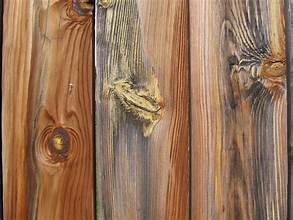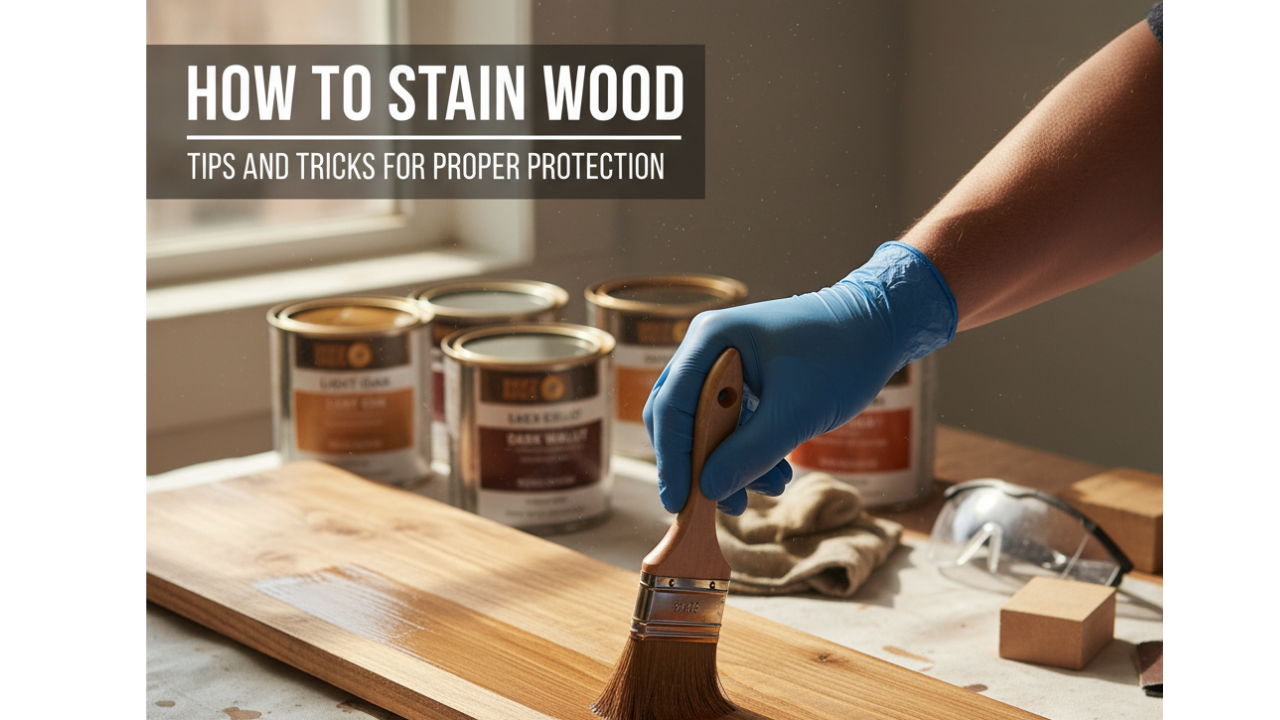How To Stain Wood – 2025
Although applying wood stain might be scary at first, if you master a few fundamental methods, you’ll soon be wowing friends and family with your flawless staining abilities. In this article How To Stain Wood, we’ll dissect some simple advice from experts on applying wood stain to decks, fences, outdoor furniture, and other surfaces in this piece.
Learning how to stain wood is an essential skill for DIY enthusiasts.
What Is Wood Staining?
A freshly sanded wood surface is covered with a coat of stain to alter the color of the wood or highlight the wood grain. Sanding and staining wood is the process of refinishing it. Refinishing a wood surface entails washing the wood to get rid of any old varnish or stain, staining it again, and then adding a wood finish, such polyurethane, on top. You don’t need to be a skilled carpenter to refinish wood trim or furniture, but it is imperative that you properly prepare the wood before staining.

Wood Staining Expert Tips:
This guide on how to stain wood will help you achieve professional-looking results.
Regardless of your level of experience with do-it-yourself tasks, these professional suggestions from Consumer Reports will improve the appearance and durability of your wood staining endeavors. If you want to improve your staining skills, keep reading how to stain wood – 2025
Remember, understanding how to stain wood begins with proper preparation.
By knowing how to stain wood correctly, you can ensure a beautiful finish.
Prep Work is Key
To get the best finish possible, properly prepare the area before applying any stain. Make care to thoroughly clean and dry the wood surface, making sure to get rid of any oil, dust, or grime. This prevents blotches and uneven pigment from forming from the stain’s uneven absorption. Before staining, think about using a light detergent or cleaning, give the area a good rinse, and let it a full day to dry completely.
It’s crucial to understand how to stain wood in the direction of the grain.
Test First on Scraps
For best results, learn how to stain wood with multiple thin coats.
It’s always a good idea to test your stain color on scrap pieces of wood first to see how it will look when fully dried. Make sure the color and tone match your aesthetic vision before tackling the entire project. Scraps also provide an opportunity to practice application techniques.
With or Against the Grain?
In our tips on how to stain wood, we recommend following expert advice.
Find out how to stain wood effectively by exploring various techniques.
For smoother finishes, always stain in the direction of the wood grain rather than against it. Stroking with the grain allows for an even absorption without excess stain pooling in the grooves. Going against the grain can lead to splotchy results.
Multiple Thin Coats are Best
Rather than one heavy coat of stain, opt for two light coats instead. Thin coats allow the pigment to soak in fully without excess pooling on the surface. Give each coat enough time to dry completely before adding the next, usually waiting 2-4 hours in between. The overall look will be richer and more even.
By following these simple expert tips, you’ll be a wood staining pro in no time. Be sure to comment below with any other questions! With practice, preparation, and patience, stunning results are within reach using only natural wood stains.

Tips & planning: Staining wood
In this How To Stain Wood blog section, we answer some FAQs about wood staining and glazing to help you get the best results from your project.
What’s the difference between wood stain vs varnish?
To protect wood from weather and temperature effects, you can use both stains (also called glazes) and varnishes. The following table illustrates the differences between stains and varnishes:
| Wood stains | Wood varnishes |
| Natural and transparent protectionCan apply in either thin or thick layersWood grains remain visible | Opaque coatingAvailable in different coloursWood grain becomes hidden |
| A wood stain forms a transparent protective layer that protects the material from weathering without concealing the wood grains. Both thin and thick glazes are available, the main differences being that thin glazes have fewer pigments and penetrate deeper into the wood to provide internal protection. Thick wood stains, meanwhile, provide a varnish-like layer on the exterior which prevent moisture penetration. In both cases, the wood pores remain open and can regulate moisture intake. | Wood varnishes effectively protect wood from external weathering. They are available in a variety of colours, so you have a greater choice when it comes to decorating your furniture. However, varnishes are opaque and conceal the natural wood grains. |
It’s possible to apply a layer of varnish over wood stain, but doing the opposite is not recommended. Applying stain over varnish is counterproductive, since wood stain is designed to penetrate the material, which the layer of varnish underneath would prevent.
FAQs: How To Stain Wood – 2025
Properly applied wood stain can significantly enhance how to stain wood projects.
When learning how to stain wood, consider different types of stains available.
Choose the right stain, as it plays a key role in how to stain wood.
Preparation is vital for understanding how to stain wood correctly.
Drying times are important when considering how to stain wood efficiently.
For outdoor projects, know how to stain wood with exterior-specific formulas.
Regular maintenance is key to preserving how to stain wood finishes.
It is crucial to follow the 10 Essential Tips on How To Stain Wood for Proper Protection to ensure a successful staining process. By understanding the nuances of stain selection, preparation, and maintenance, one can achieve optimal durability and aesthetic appeal in wood projects.







